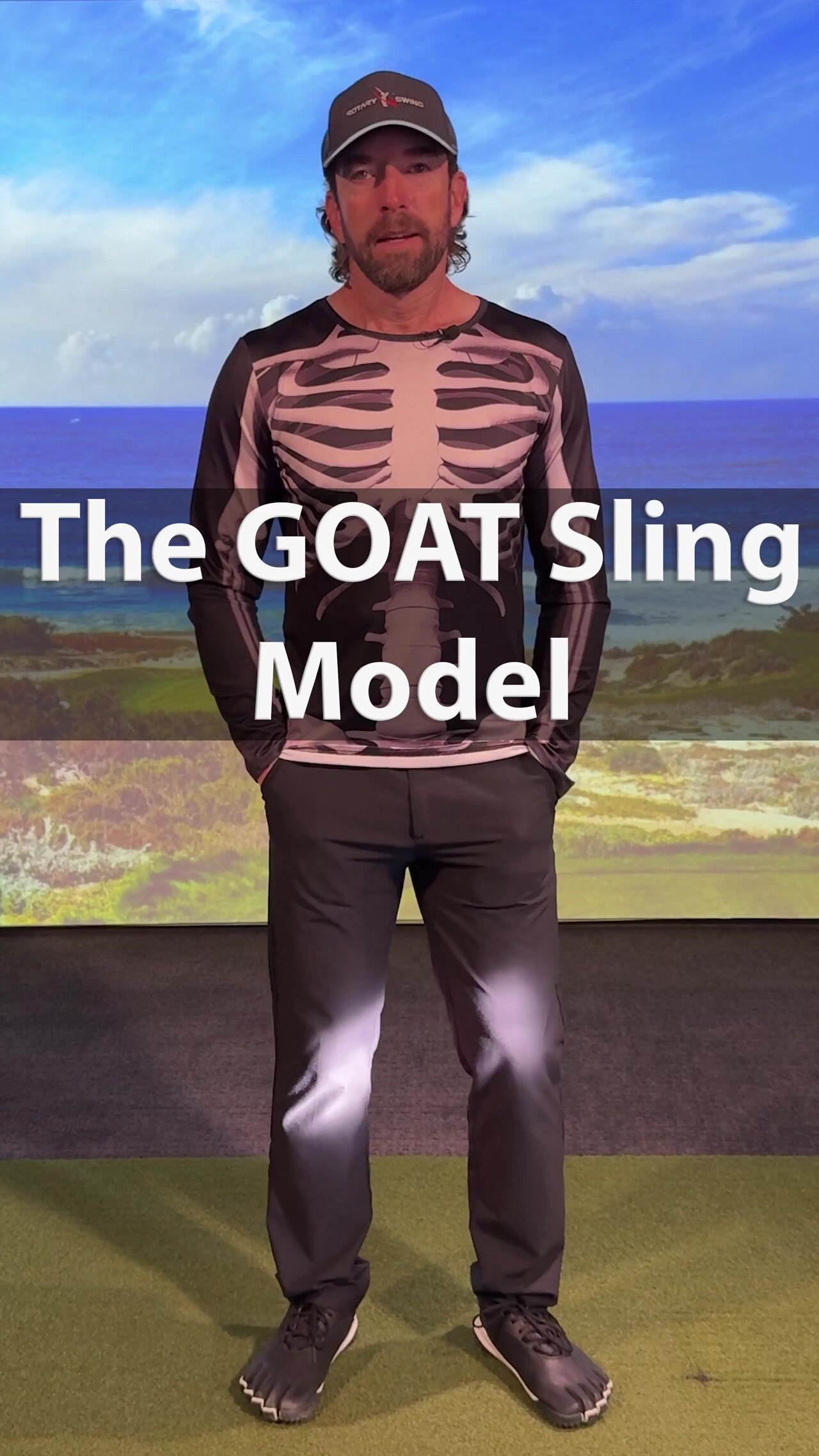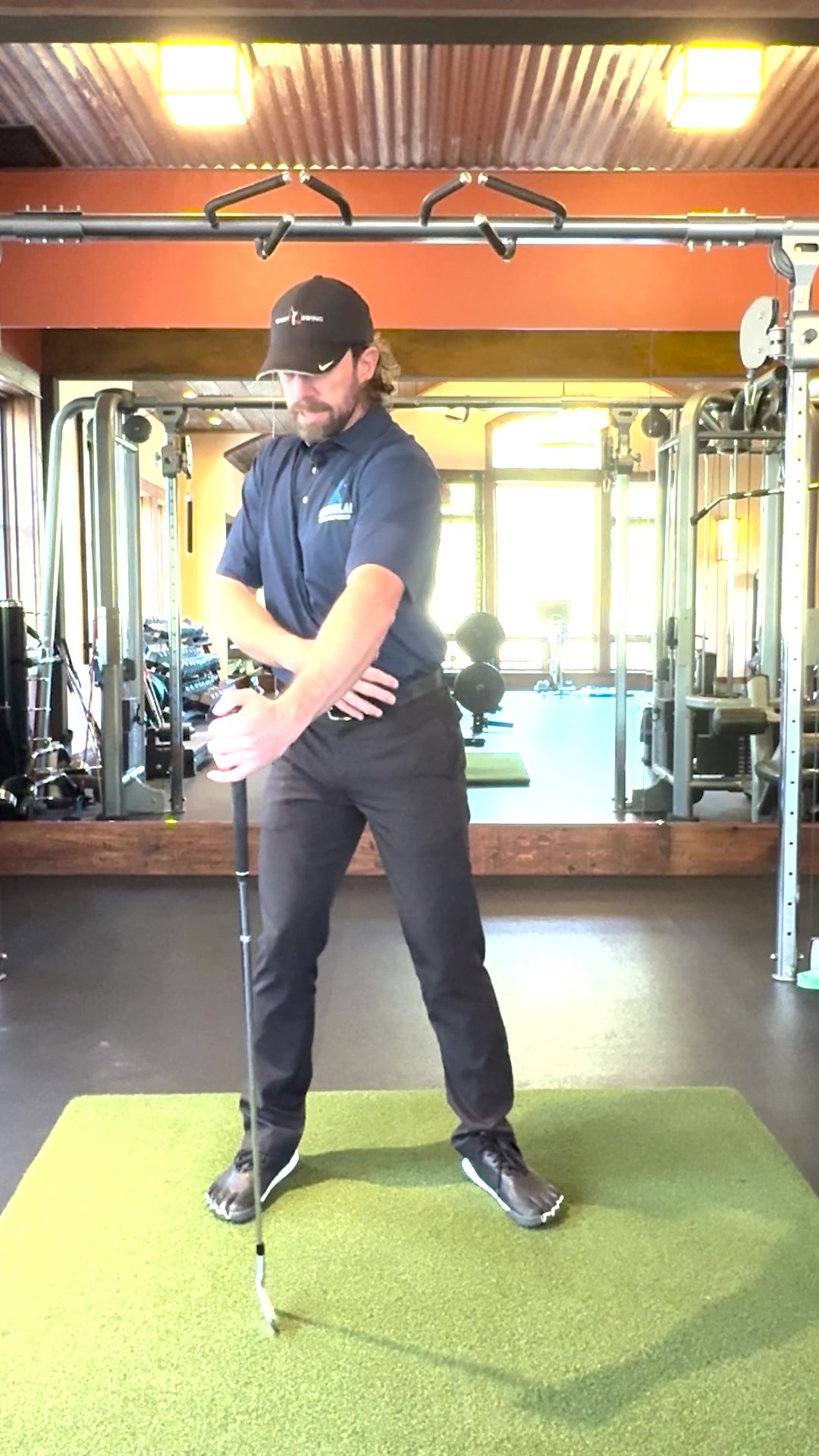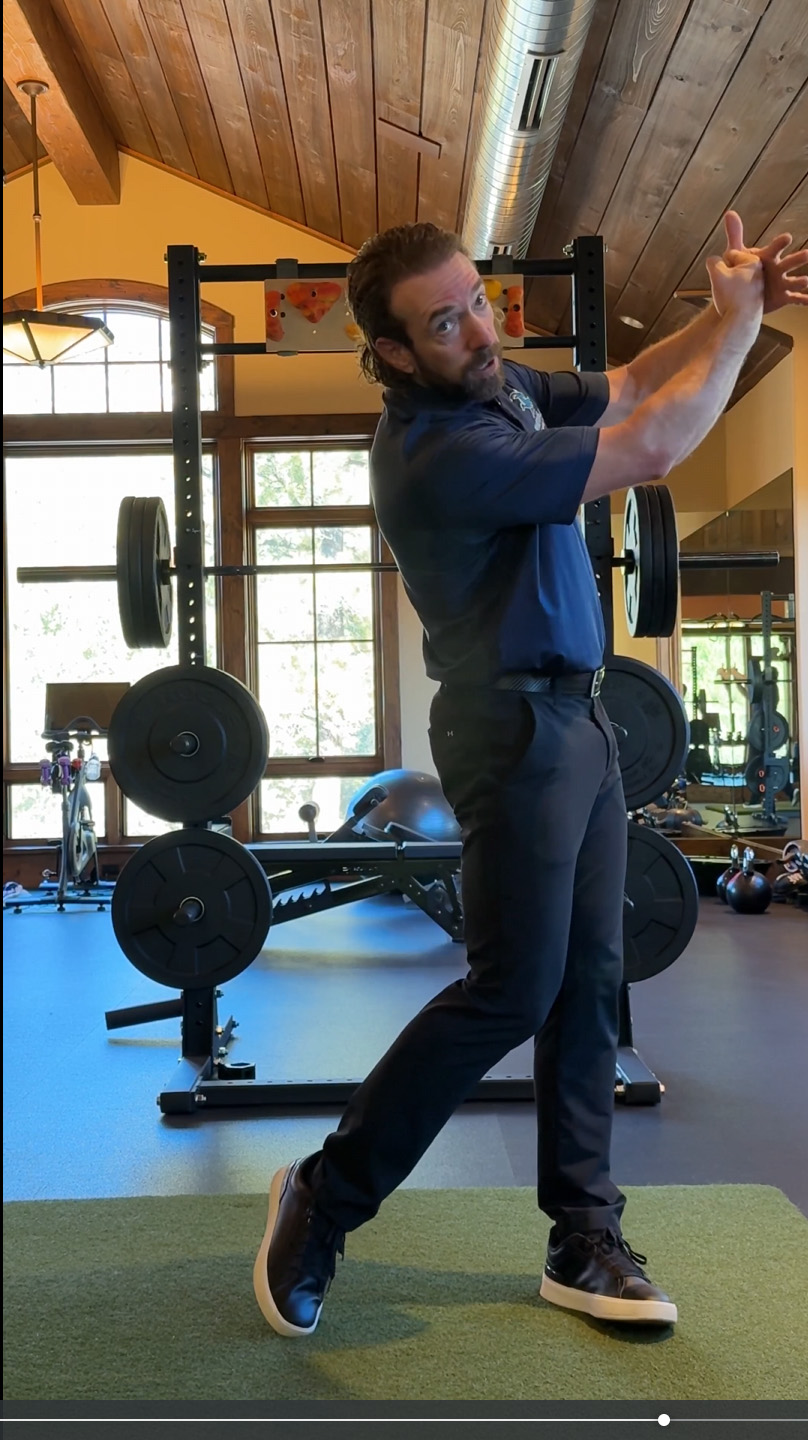The transition is the hardest part of the golf swing for most golfers to learn how to sequence properly, but now, you'll be able to overcome that difficulty.
In this video I reveal the SECRET sequencing I use to teach all my students how to develop a perfect transition that preserves your lag to provide the elusive power of the tour pros.

The video teaches you how to get this much lag, which is all you'll ever need to play great golf!
Most instructors consider the transition the most difficult, if not impossible, aspect of the swing to teach.
When you understand the underlying biomechanics and purpose of the movements, it makes it simple to break it down into the RST learning program that will allow you to revolutionize your swing in just a couple weeks of doing these drills.
There are three key steps to the drill that are described in detail during the video:
- From the top, perform the Downcock Pump Drill.
- Pull the hands to the thigh.
- Release and hit the proper impact alignments (face on and down the line).
When it comes to step two, pulling the hands to the thigh, there will be a distinct difference between where long-time golf club "casters" (those who lose their lag really early) and more accomplished ball strikers will need to focus.
The images below illustrate this difference:

Better players should feel the lag being retained to the right thigh (1st image), while club "casters" will need to feel the lag all the way to the left thigh (2nd image).
As you can see above, if you have a history of casting the club and losing your lag very early in the downswing, you will need to feel like you maintain your lag and keep the club parallel to the ground until you get to the inseam on your front leg, or where your lead arm is about vertical.
Better players will just need to concentrate on getting to the rear thigh or risk having too little time to release, leaving the club face open at impact.
You'll see this principle demonstrated in the video even more clearly, learn the entire sequence of moves that encompass the drill and get crucial nuggets of info about squaring the club face and leveling the shoulders, all of which will help you master this most challenging part of the swing.
Check out the video now because this drill can fix a ton of downswing problems and can help you compress the ball time and time again (or maybe for the first time ever for some of you)!
Video Transcription: Golf Transition Drill
One of the most common aspects of the golf swing that golfers mess up is the transition from the backswing to the downswing.
What golfers don't understand is, they think that if they swing really fast and hard from the top by the time they get to impact they'll have a lot of speed but the exact opposite is actually usually true.

Go to the top and pause
Learning the sequence of the transition and the sequence of the downswing and the technique of impact, the proper positions, is really 99 percent of the golf swing. If you can sequence everything correctly and get into the proper impact alignments, you can play great golf, hit the ball a long ways with no effort, and enjoy the game for the rest of your life.
If you don't take the time to learn to sequence everything correctly you will struggle forever. You will flip the ball, you will hit it very high and weak, you'll scoop it, you'll never take a divot, you'll never compress the ball. That's really one of the most enjoyable parts of the game of golf, if we're honest.
I'm a decent putter. I don't love putting. I don't really love chipping. I'm OK at all of those things, but I love the feeling of a compressed golf ball. If you learn how to go through the sequence correctly, you will be able to do that - perhaps for the first time ever - especially if you keep working on the impact alignments.

Add the downcock
This is a very, very important video.
Here's what we're going to do. In order to sequence this correctly, you're going to have to go through the same mundane tasks that my students do, which is hitting a lot of quarter and half and three-quarter shots to learn to master the sequencing and the timing of it before you ever move up to a full swing.
Here's what you've got to understand. You're going to work through things very, very slowly at first, and in very chunky and clunky steps at first, in order to be able to do the moves correctly. Then we'll build up to full speed.
Here's how it works. You're going to go to the top and pause, just like we always do. Now what you're going to do is add the piece that we've already worked on, the Downcock Drill. Shift to the left, the wrist is going to bend back, the club comes in narrow, close to the right shoulder.
From there, the next piece is bring your hands to your right thigh. If your hands get to your right thigh and the club shaft is still parallel to the ground, you have all the lag in the world that you possibly need to hit a good shot.

The wrist angle has been lost
If you get down to your right thigh and the club is like this and you've lost the angle between your right wrist, and the club shaft is no longer parallel to the ground or it's parallel to the ground out here as you start down, you're in trouble. You're going to be scooping it and flipping it for the rest of your life.
In order to avoid that, we're going to downcock and shift, pull the hands to the thigh, and then work on our impact alignments and release.
What you want to feel if you're really, really struggling with this and you've always casted the club from the top because you spin your body coming through...It's the most common cause, because what you're doing when you rotate your body is you're creating centripetal force. Because of that, there's going to be an opposite and equal effect on the other side, which is going to be centrifugal force.
That means that if you spin your body fast, the club is going to want to be thrown out and by the time you get to impact you're scooping and flipping.

The left shoulder is low
As you're doing this, you're going to keep your upper body, and even your hips for many hip spinners, feeling like they're shut. As I do that, notice that my left shoulder is very low. It's not working up and out like this. My left shoulder is low.
I've got a lot of lag, and then I can release the club. What you're going to feel, if you really struggle with maintaining lag, is that you're going to forget about the right thigh and you're going to think about getting the back of your left hand to the pants seam on your left thigh, where your left arm is basically vertical to the ground. Now we've got a nice right angle here, 90 degree angle. The club shaft is still parallel to the ground.
If you're a better player you don't want to work on getting your hands that far ahead unless you want to hit just a ridiculously low shot, because you're going to also start getting to the point where you can't release the club face, so you'll block it out to the right a little bit when your hands get too far forward.
For a better player, you've learned how to sequence it and you're in this position, you just need to start releasing the club.
But if you're someone who has really, really struggled with casting the club and you've never been able to get rid of that, you're going to sequence downcock, to the left thigh, and then release it. It's going to feel a little bit more exaggerated for you.
The one thing I want to point out from down the line is that, as you're coming down, we want to start making sure that that club face is squaring early - remember that Squaring the Club Face Early video. As we come down, at our checkpoint here of this right thigh, you want to feel that that club face is slightly shut.

Club face toe up (above), wide open (center), slightly shut (below)
In other words, this would be toe up. That's square. This would be wide open - we're going to have to flip that one. At this point, if my club face is slightly shut there's going to be very little rotation coming through the hitting area, where you want as minimal timing as possible.
The more open your face is, the more you've got to flip it and try and learn to time that and slam it shut. If it's a little bit shut, as you come through the club face is going to be rotating relatively slowly, and that means you're not going to have to work to time a flip so aggressively.
As you work into hitting shots with this, at first you want to work on just doing it without a golf club, or flip the club upside down. Go to the top, shift and downcock, pull your hands down.
As you get comfortable with that and you start working with a club, then what you want to do is start going through the clunkiness of it. That is, going through piece by piece and pausing at each step. We're going to shift and downcock, pause, right thigh, pause, hit the ball, pause - checking our steps along the way every single time.
At first, my students hit the ball maybe 10-15 yards. Then they slowly start adding up from there. They can start adding a little bit more timing and sequence to it to glue it all together, but for the first half hour they may only be able to do this, this, and this, and hit a lot of half-shots until that's done perfectly.
Once that's done correctly, then we start going through the whole thing very, very slowly, still pausing at the top and then sequence everything very slowly. Then we can start to put some speed into it, and then we can start to get some real speed into it.
Work through it really, really slowly. You start down really slow and gradual, working on the technique and the sequencing, and you'll find yourself in positions that you've never even dreamed possible in a very short period of time.
Watch part 2 now to see how you're moving your body in the opposite direction of the pros!










































































































































































































 The video teaches you how to get this much lag, which is all you'll ever need to play great golf!
The video teaches you how to get this much lag, which is all you'll ever need to play great golf! Better players should feel the lag being retained to the right thigh (1st image), while club "casters" will need to feel the lag all the way to the left thigh (2nd image).
Better players should feel the lag being retained to the right thigh (1st image), while club "casters" will need to feel the lag all the way to the left thigh (2nd image). Go to the top and pause
Go to the top and pause Add the downcock
Add the downcock The wrist angle has been lost
The wrist angle has been lost The left shoulder is low
The left shoulder is low Club face toe up (above), wide open (center), slightly shut (below)
Club face toe up (above), wide open (center), slightly shut (below)
